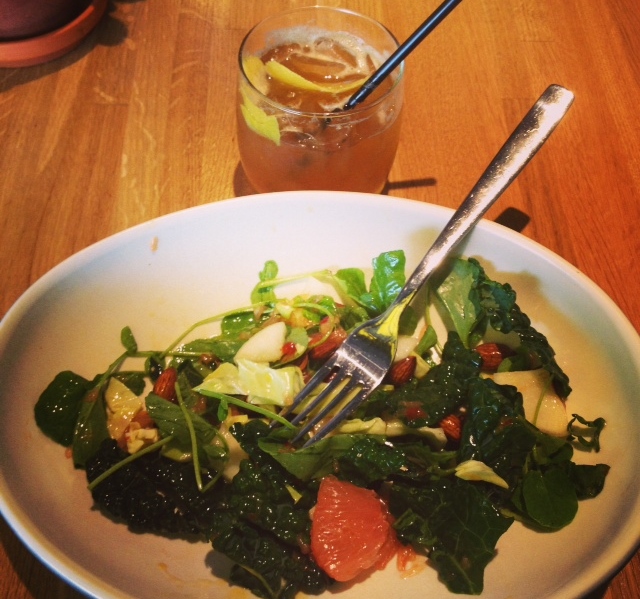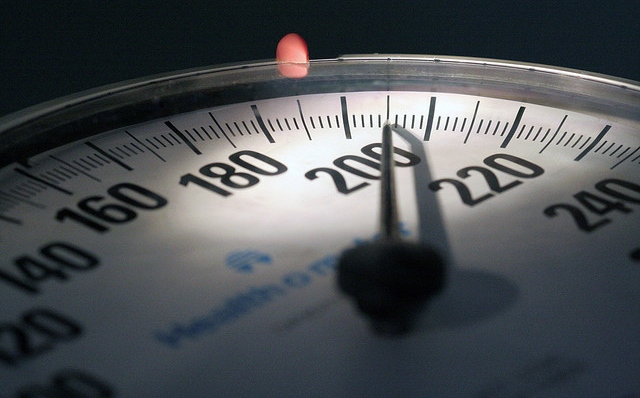There’s no escaping the truth: the more you run, the more you have to eat.
A difficult reality for those of us who have the goal of running for weight loss.

After a long run or hard workout, you may feel like you could literally eat everything in the fridge. The ravenous hunger that accompanies strenuous running makes weight loss seem impossible when you’re training – even though it seems counter-intuitive.
But it’s not: Matt Fitzgerald calls this phenomenon the “compensation effect” in his book The New Rules of Marathon and Half-Marathon Nutrition.
As running volume and intensity increase, your appetite triggers will become more sensitive because of hormonal changes in the body. In other words, exercise makes you feel hungrier and want to eat more.
So if that’s what happens when you run a lot, how can you accomplish both your weight loss and running goals?
Admittedly, it can be difficult for some runners. Especially because the compensation effect is stronger for some, actually causing weight gain during periods of heavy training.
But there are ways to control your Cookie Monster cravings, get all the nutrition and fuel you need to run well, and lose weight.
Get a jump-start with our free Nutrition Course – delivered straight to your inbox with tips on training, nutrition, weight loss, and more.
Why It’s Hard to Lose Weight While Running
Recently Anne emailed me an excellent question:
“How can I lose weight and run a lot at the same time? I have 9 months before my marathon and I’m scared that I won’t be able to make it because of my weight. I don’t want to stop running to go on a strict diet but I’m unclear as to how I can lose weight and run at the same time.”
Anne’s question echoes many sentiments that I’ve heard from runners who struggle with weight loss and running. Have you ever wondered how you can keep losing weight while eating all of the carbs necessary for running? Or how to control your appetite after a long run?
These are all great questions. And to answer them, we have to stop thinking about “diets” and cutting calories because those strategies simply don’t work for runners.
If you cut calories or carbs while running a lot (like during marathon training), you’ll feel sluggish, have poor post-workout recovery, and may not be able to finish your most challenging workouts. Your ability to tolerate high training levels will be dramatically reduced.
So you can’t “diet” by cutting calories if you’re training because you’ll run poorly. And to lose weight (and keep it off), you have to run smart.
Train Smart to Lose More Weight
There’s comforting news for competitive runners: smart training can help you lose more weight than “just” running. When your training is designed properly with a time goal in mind, you’ll shed pounds faster than if you were just running for fun.
I’ve asked a lot of runners “what fast workouts have you done recently?” And the responses are often a variation of the same answer:
“45 minute – 1hr runs at the same pace a few times per week”
“None…”
“Once a week I finish a run a little faster than usual and try to get a negative split.”
“Random intervals when I remember… about once per month.”
No wonder why many runners find it difficult to lose weight. Their training isn’t structured to promote weight loss.
And it’s not just fast workouts, either. The progression of workouts, “extras,” long runs, and even frequency of running all work together to help you lose weight.
So when you see many of my runners posting dramatic personal bests, being at their personal goal weight is a big part of that. Smart training helps get them there and is what I help runners with every day.
Ongoing exercise is also critical for weight management. People who have successfully lost weight and kept it off almost always exercise regularly. That’s why smart training is an integral piece to permanent weight loss.
To see how you can train smarter, check out the PR Race Plan or the full Injury Prevention for Runners program.
But in addition to training correctly, your food choices make a vital contribution to your weight loss goals as well.
Curb Your Appetite and Lose Weight (No Dieting Required)
I despise diets. I really detest them. They’re unsustainable and gimmicky – whether you’re following Zone, Jenny Craig, or Atkins, you’re ultimately doing one thing: eating a low-calorie diet. And we’ve learned that low-calorie diets won’t allow you to run to your full potential.
But with better food choices, we can control weight gain and prevent it from coming back once it’s (finally) lost. While I’m not a nutritionist – nor do I play one on the internet – there are several tried and true methods of controlling your hunger and shedding unwanted pounds.
Eat extra protein in the morning. This weight loss strategy was first introduced to me by Tim Ferriss in his outstanding book The 4-Hour Body. The premise is simple: eat 30g of protein within 30 minutes of waking up to keep you full longer and stop the catabolic break-down of muscle from fasting overnight.
In fact, Ferriss’ credits this one simple ritual as the catalyst for his father losing 90 pounds – at age 65.
The fastest digesting form of protein is whey, derived from milk and widely available as a powder that you can mix with water or milk.
I’m often asked what supplements I take and my answer is “virtually none.” But the two supplements that I regularly use are a protein shake using whey powder. Specifically, I use Optimum Nutrition 100% Whey Gold Standard because it’s the most affordable, trusted, and best-tasting product available.
And in case you’re hesitant: a daily protein shake will not cause you to gain weight or “bulk up.” There’s not enough calories and you’re not doing the weight workouts necessary to gain muscle mass.
Besides, if you’re running a few times per week it’s incredibly difficult to gain muscle mass. Trust me, I’ve tried…
I also love AG1 by Athletic Greens. It’s a greens mix, vitamin and mineral supplement, probiotic, and prebiotic. It’s like “nutrition insurance.”
Focus on nutrient dense foods (if you can’t, use Athletic Greens).
Too many of us “reward” ourselves after a good run with bagels, cupcakes, or cookies. And before you complain that I’m being a stick in the mud, know that I’ve out-eaten guys 100+ pounds heavier than me. I can eat!
But that doesn’t change the truth that if you’re trying to lose weight, nutrient dense and low caloric density foods need to form the corner stones of your diet. Here are a few examples of nutrient dense foods:
- Vegetables (low calorie)
- Fruit (moderate number of calories)
- Legumes (moderate number of calories but high satiety)
- Grains (moderate number of calories but high satiety)
Satiety is critical here because these foods keep you full and satisfied for longer without a lot of calories. For more recipe ideas than you can shake a stick at, check out this list of healthy recipes by Registered Dietitian (and runner!) Anne Mauney.
Make Grocery Shopping Easier
Surrounding yourself with whole, clean, and “real” food is one of the best ways to force yourself to eat nutrient dense and healthy food. That’s not a diet – it’s just enabling yourself to make better food choices.
So stock your kitchen with healthy foods and “convenience items” like Athletic Greens.
Next, clean out your kitchen and remove most processed foods that are calorically dense but nutrient poor. Either have one last eating bender, donate those items to a food pantry, or simply throw them out.
Now it’s time to go shopping! Instead of worrying about eating the same 10 foods over and over again, I put together a free resource to help you eat more real foods.
The Master Shopping List has nearly 90 foods you can buy on your next trip to the grocery store – from fruit and veggies to seafood and even nut butters. Everything here (well, almost everything) is what I consider a “real food” – so stick with these foods to feel great.
You can sign up here and I’ll send it to you. Use it to get new ideas for dinner when you’re feeling stuck.
As my Italian Grandmother would say, mangia!
